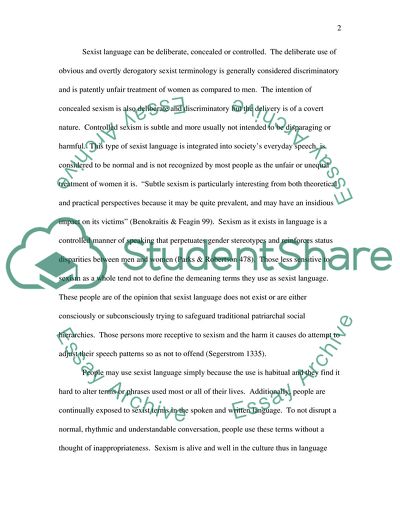Cite this document
(“Sexism is alive and well in the English language Essay”, n.d.)
Retrieved from https://studentshare.org/english/1538090-origins-of-english
Retrieved from https://studentshare.org/english/1538090-origins-of-english
(Sexism Is Alive and Well in the English Language Essay)
https://studentshare.org/english/1538090-origins-of-english.
https://studentshare.org/english/1538090-origins-of-english.
“Sexism Is Alive and Well in the English Language Essay”, n.d. https://studentshare.org/english/1538090-origins-of-english.


